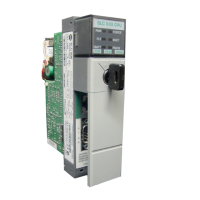Allen-Bradley Ethernet Driver
Inter-Device Delay: Specify the amount of time the communications channel waits to send new requests to the
next device after data is received from the current device on the same channel. Zero (0) disables the delay.
Note:This property is not available for all drivers, models, and dependent settings.
Channel Properties - Communication Serialization
The server's multi-threading architecture allows channels to communicate with devices in parallel. Although this
is efficient, communication can be serialized in cases with physical network restrictions (such as Ethernet
radios). Communication serialization limits communication to one channel at a time within a virtual network.
The term "virtual network" describes a collection of channels and associated devices that use the same pipeline
for communications. For example, the pipeline of an Ethernet radio is the master radio. All channels using the
same master radio associate with the same virtual network. Channels are allowed to communicate each in turn,
in a “round-robin” manner. By default, a channel can process one transaction before handing communications
off to another channel. A transaction can include one or more tags. If the controlling channel contains a device
that is not responding to a request, the channel cannot release control until the transaction times out. This res-
ults in data update delays for the other channels in the virtual network.
Channel-Level Settings
Virtual Network This property specifies the channel's mode of communication serialization. Options include
None and Network 1 - Network 50. The default is None. Descriptions of the options are as follows:
l None:This option disables communication serialization for the channel.
l Network 1 - Network 50:This option specifies the virtual network to which the channel is assigned.
Transactions per Cycle This property specifies the number of single blocked/non-blocked read/write trans-
actions that can occur on the channel. When a channel is given the opportunity to communicate, this number of
transactions attempted. The valid range is 1 to 99. The default is 1.
Global Settings
l Network Mode:This property is used to control how channel communication is delegated. In Load Bal-
anced mode, each channel is given the opportunity to communicate in turn, one at a time. In Priority
mode, channels are given the opportunity to communicate according to the following rules (highest to
lowest priority):
l Channels with pending writes have the highest priority.
l Channels with pending explicit reads (through internal plug-ins or external client interfaces)
are prioritized based on the read’s priority.
l Scanned reads and other periodic events (driver specific).
The default is Load Balanced and affects
all
virtual networks and channels.
Devices that rely on unsolicited responses should not be placed in a virtual network. In situations where com-
munications must be serialized, it is recommended that Auto-Demotion be enabled.
Due to differences in the way that drivers read and write data (such as in single, blocked, or non-blocked trans-
actions); the application's Transactions per cycle property may need to be adjusted. When doing so, consider
the following factors:
l How many tags must be read from each channel?
l How often is data written to each channel?
www. kepware.com
9

